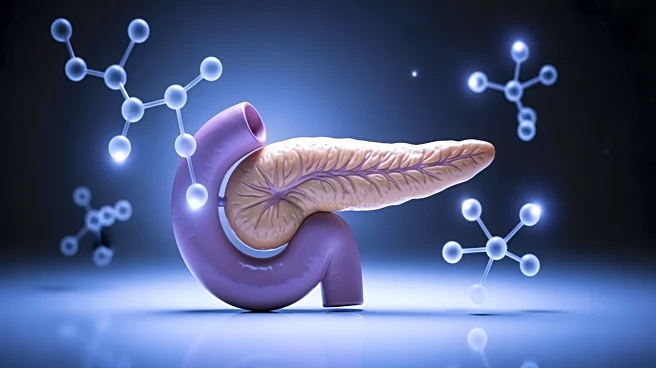What's Happening?
A team led by Berna Özkale has introduced a novel soft microrobot designed to enhance the assembly and control of three-dimensional cell models, such as organoids and spheroids. These models are crucial
for studying diseases and testing drugs, but their construction has traditionally been slow and unpredictable due to reliance on biological self-assembly. The microrobot can move single cells, assemble spheroids, and apply controlled heat while monitoring temperature, offering real-time adaptability and dynamic control. It functions as both a localized heater and a temperature sensor, utilizing rhodamine B embedded in hydrogel for fluorescence-based thermometry and gold nanorods for controlled photothermal stimulation. This technology allows for precise thermal mapping and examination of cellular responses to heat, identifying temperature thresholds that activate thermosensitive ion channels and trigger stress responses, including apoptosis. The microrobot's capabilities were demonstrated by reducing cancer cell invasion and viability in fibrosarcoma spheroids when combined with low-dose doxorubicin, a chemotherapy drug.
Why It's Important?
The development of this microrobot represents a significant advancement in the field of biomedical research, particularly in the study of cancer and drug testing. By providing dynamic control over 3D cell cultures, researchers can more accurately simulate the human body's environment, leading to more effective therapeutic strategies. The ability to combine thermal and drug treatments could revolutionize cancer therapy, offering new avenues for reducing tumor viability and invasion. This technology also enhances the precision of experimental conditions, potentially accelerating the pace of research and development in pharmaceuticals. The implications for public health are substantial, as more effective treatments could emerge from this innovative approach, improving patient outcomes and reducing healthcare costs.
What's Next?
Future research will likely focus on refining the microrobot's capabilities and exploring its applications in other types of cell models and diseases. Researchers may investigate the potential for scaling up this technology for broader use in clinical settings, particularly in personalized medicine where tailored treatments are crucial. Collaboration with pharmaceutical companies could lead to the development of new drug formulations that leverage the microrobot's ability to deliver targeted therapy. Additionally, regulatory pathways will need to be navigated to ensure the safe and effective implementation of this technology in medical practice.
Beyond the Headlines
The ethical implications of using microrobots in medical research and treatment are significant. As this technology advances, considerations around patient consent, data privacy, and the potential for unintended consequences must be addressed. The integration of artificial intelligence in controlling these microrobots also raises questions about accountability and decision-making in healthcare. Long-term, this innovation could shift the paradigm in how diseases are studied and treated, emphasizing the importance of interdisciplinary collaboration in advancing medical science.











